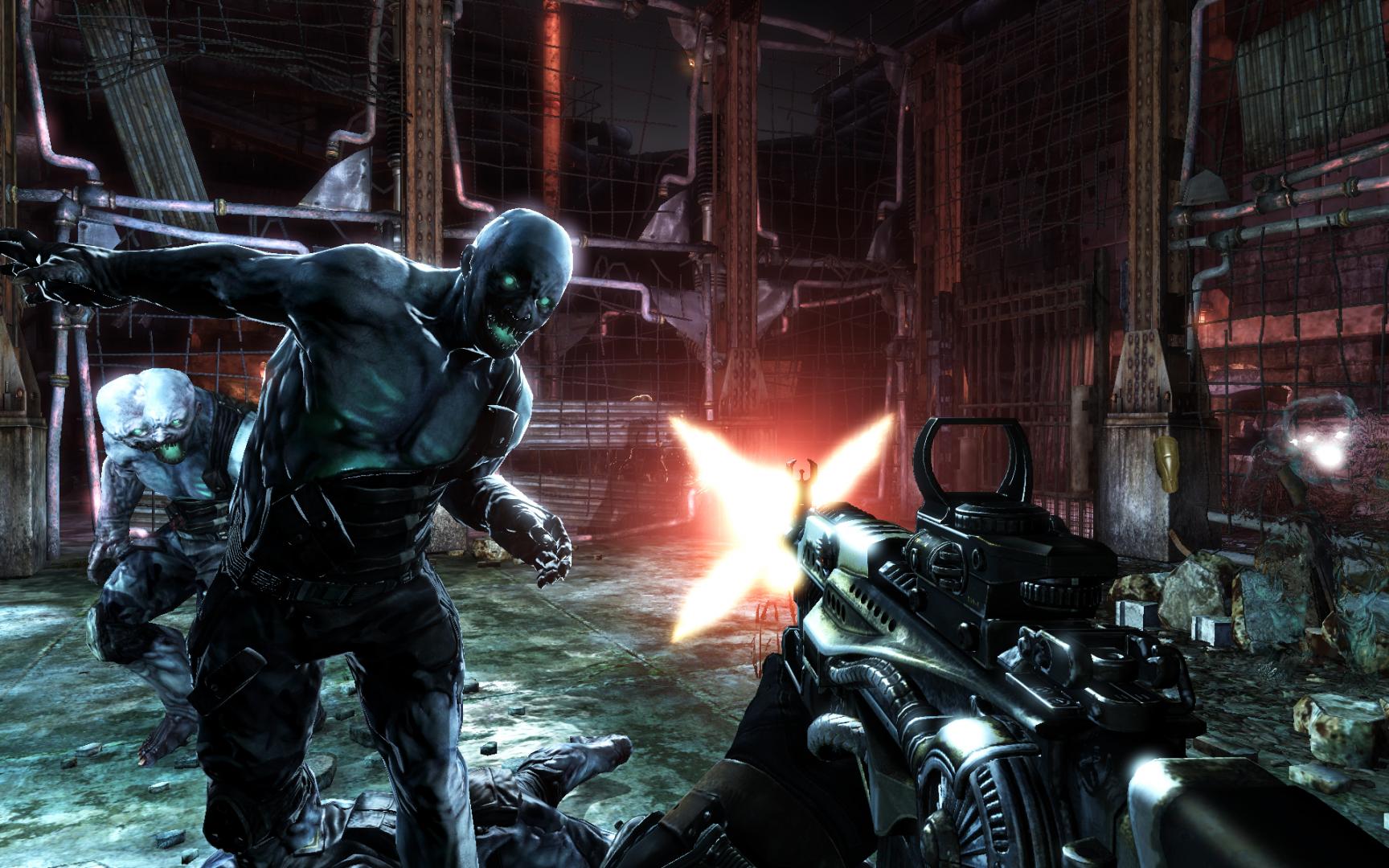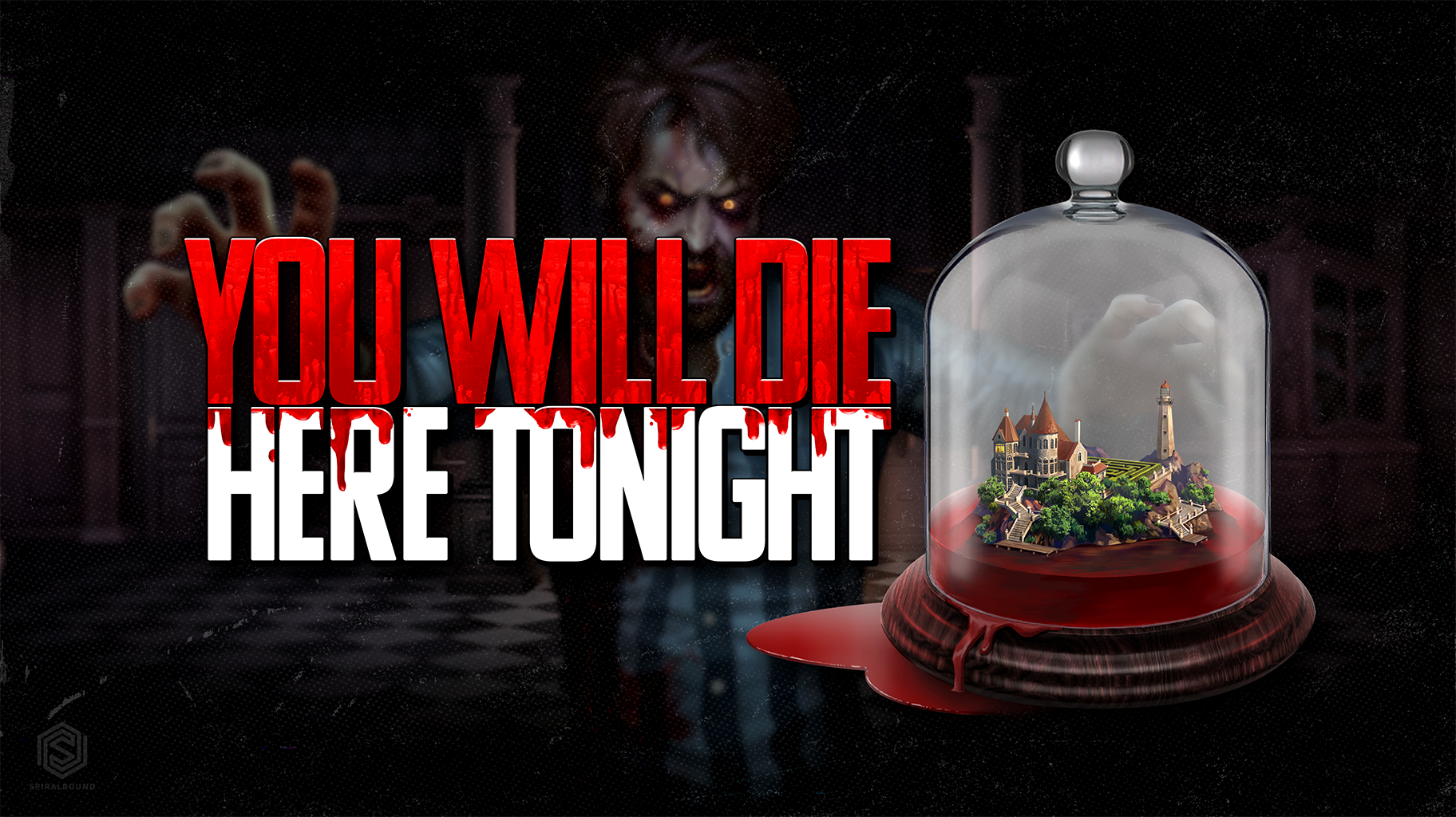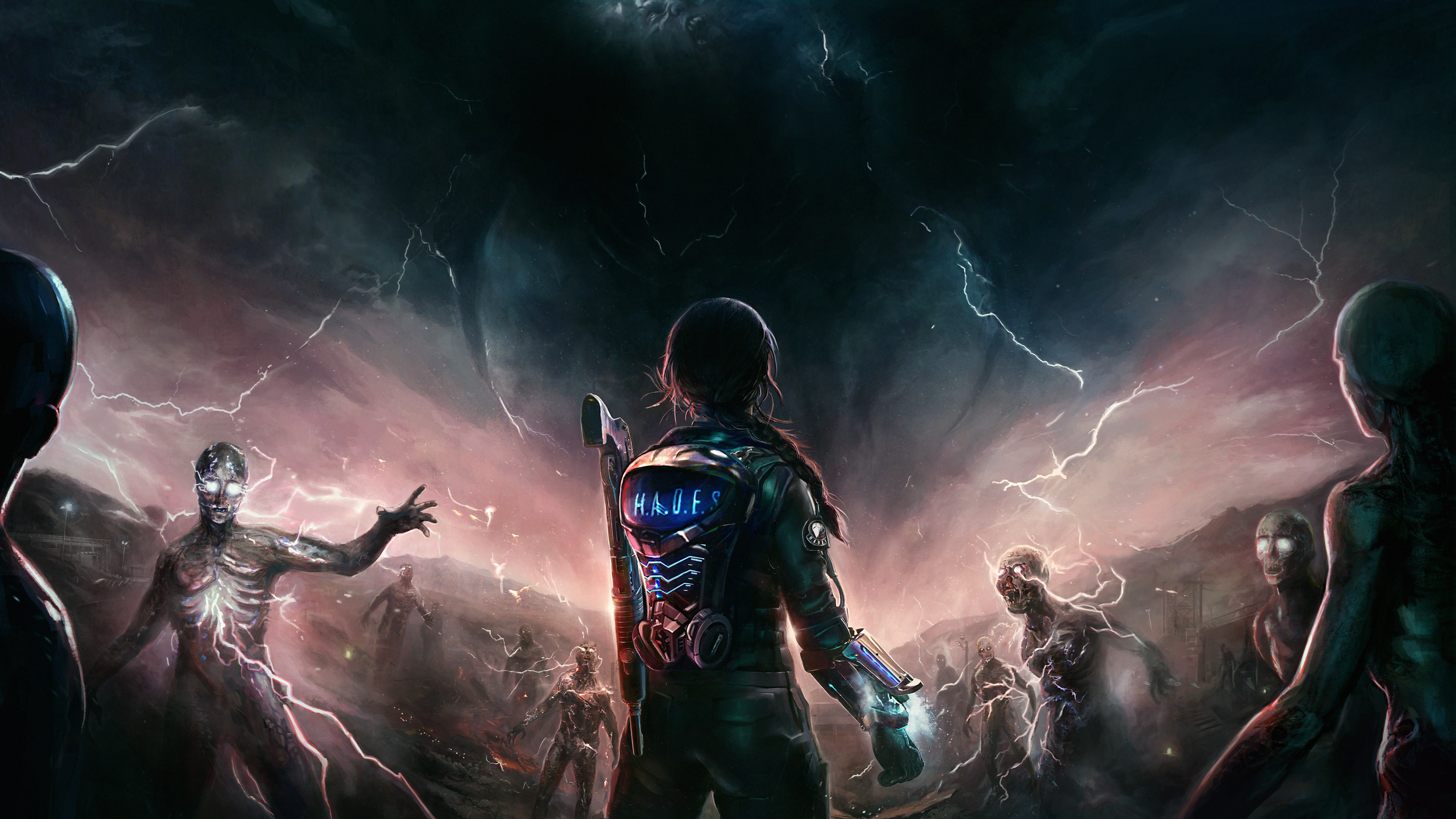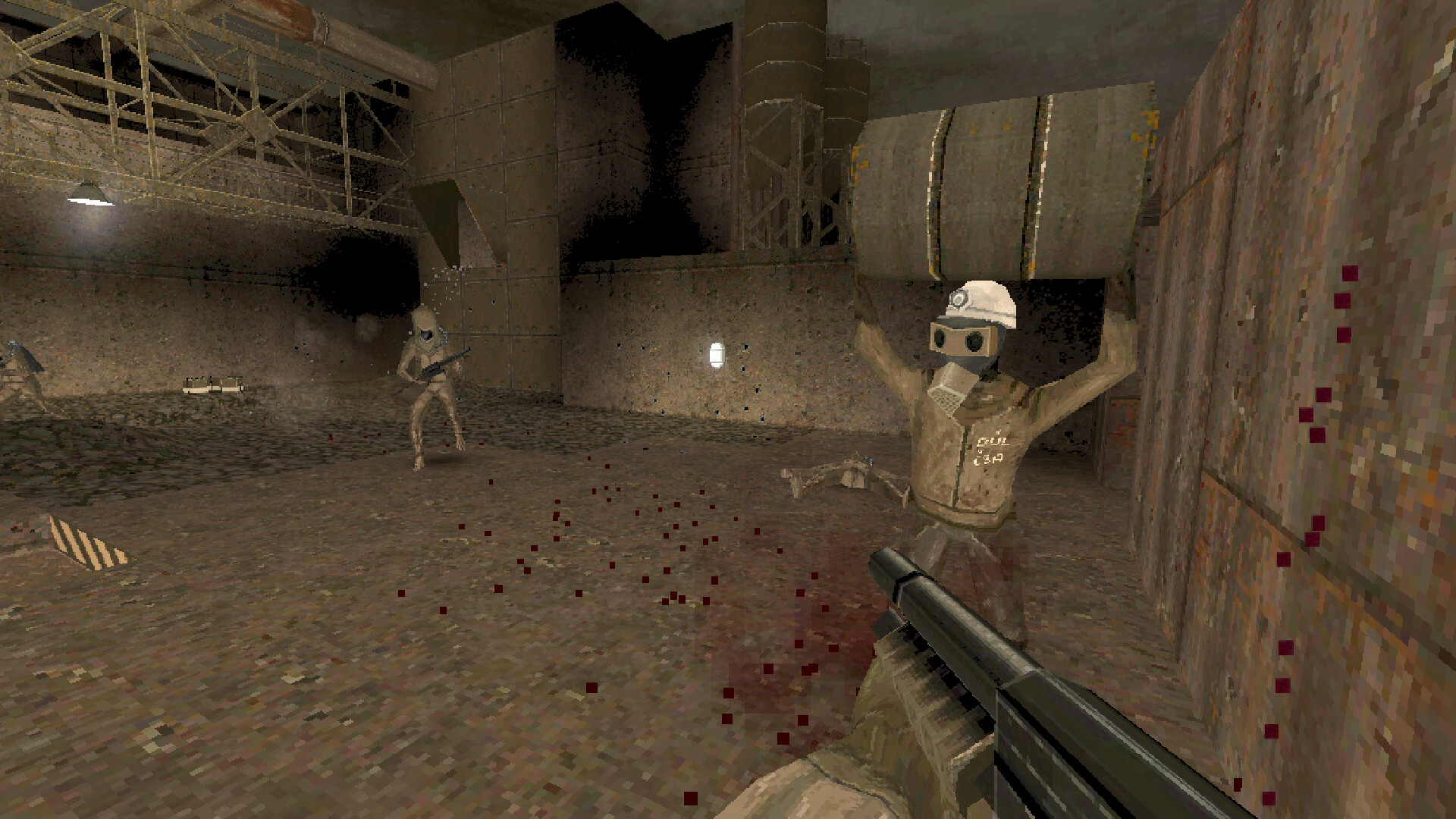
5 More Horror Games That Deserve not to be Forgotten
In a previous post, we’d listed off five horror games that had – unfairly in our view – been left behind by gaming history. But there are many more forgotten fright fests out there, so this time we’re taking another trip to the past to find five more titles of terror lost to time.
5. Dark Sector

Dark Sector is a third-person shooter brought to us by Digital Extremes, makers of the popular free-to-play Warframe. Dark Sector had an extremely convoluted development, having been originally announced way back in 2000. Initially a sci-fi shooter set in space, it was drastically reworked at some point around 2005, before eventually being released in its final form in 2008 for Windows, Xbox 360, and PlayStation 3.
The game follows Hayden Tenno, a CIA agent sent into a fictional Soviet satellite country to investigate the outbreak of a mysterious pathogen known as the Technocyte virus. Hayden’s plans go awry when he gets infected with the virus himself, which slowly begins mutating him into a biological killing machine. The infection allows him to manifest ‘the glaive’, a metallic Krull-like blade that serves as the game’s USP. In addition to being a potent throwing weapon, the glaive gives Hayden a number of abilities such as temporary invisibility and being able to generate a bulletproof shield for short periods of time. Though not a true horror title, the game featured enough rundown environments, mutated enemies, and bloody kills to be worth a mention on this list.

No one’s going to call Dark Sector any kind of cruelly ignored horror masterpiece. The gameplay, though competently executed, is hardly unique, revolving primarily around fairly generic cover-based shooting and purchasing weapon upgrades. It’s at its best when it’s introducing a steady stream of new weapons, enemies, and abilities for the glaive, after which gameplay ceases to innovate much and becomes fairly by the numbers. Its biggest letdown is its paper-thin plot, which was likely the result of Dark Sector going through so many iterations. But it’s getting noted here two reasons. One is the glaive itself, which unlike so many other gimmick mechanics in other titles manages to integrate itself into the core gameplay in a way that feels both fluid and natural. (Plus, being able to bisect an enemy in slow motion just never ceases to be fun.) Secondly is the art direction. Whilst Dark Sector isn’t the most graphically powerful of games, there are times when the game’s environments, lighting and enemy designs all come together to create that all-important sense of immersion, making the general lack of plot and background feel that much more of a shame. It’s a salutary reminder to designers both on the importance of having a strong aesthetic, and the limitations of this for worldbuilding if it isn’t backed up by a solid narrative core.

4. Singularity

A Soviet island overrun with gasmask-wearing mooks and mutants? A hand-held device that gives the player special powers? Hang on, haven’t we just done this? Perhaps this sense of déjà vu is appropriate; after all, going back in time is what Raven Software’s Singularity is all about.
Released in 2010 for Windows, Xbox 360, and PlayStation 3, Singularity was a sci-fi FPS set in an alternate universe where those pesky Commies got one up over the free world. Playing as Captain Renko, a member of a US Recon Marines team, things don’t get off to a good start when an energy blast from a seemingly abandoned island causes their helicopter to crash land. Reminder kids; never get into a helicopter if you’re an FPS protagonist; it’s just an ironclad rule that it will crash. From there, the marines discover that the island is at the center of some weird time fluctuations, with the protagonist accidentally setting history down a different course where the USSR won the Cold War. Realizing that this probably wouldn’t be the best thing to put on his mission report, Renko sets out to undo the damage he’s done. Fortunately for him, he quickly discovers the TMD or ‘Time Manipulation Device’, a wrist-mounted gadget that lets him move objects backward or forwards in time.

Singularity was met with a generally positive reception on its release, but it’s safe to stay it hasn’t stuck around in many people’s memories. This is a shame because in a saturated space like the games industry it’s a truism that even perfectly decent games will get overlooked simply by dint of not being revolutionary. Singularity might not, despite its namesake, have been a landmark title in the history of horror gaming, but that’s no reason to shun it if you’re after a decent sci-fi romp. Whilst its multiplayer servers were dead on arrival (and probably still are, if they even exist anymore), the story capably paces its peaks and troughs and switches things out enough to keep each level interesting.
3. NecroVisioN

World War One is a rare setting for horror games. Perhaps this isn’t surprising; where the Second World War had a clear and very obviously evil aggressor (ignoring for the moment the inconvenient fact that the Allies sided with an equally evil USSR), the First World War was a muddled, supremely pointless affair where neither side had any particular claim to the moral high ground. When presented with the option of which conflict to make a game about, then, the one with some ready-made bad guys probably seems like the easier option. This dearth is something a shame, because the hellish images that the popular imagination associates with World War One – rat-infested trenches, barbed wire, chlorine gas, and shell-blasted wastelands – are the very stuff that horror is made of. One game that has not so much flown under the radar of gaming memory as tunneled 20 feet beneath it is NecroVisioN, a 2009 Windows-only title made by Polish developer The Farm 51.

If you’re thinking that Necrovision would be much like that Ad Infinitum horror game we occasionally hear about, with a defenseless player quietly sneaking through the somber fog of No Man’s Land, you’d be dead wrong. The Farm 51 was founded by the same folks who brought us games like Painkiller, and their take on the nightmare of the Great War was to strap a couple of heavy machine guns to the player and have them mow down the reanimated legions of hell. And just as well, too, because for the most part, NecroVisioN is pretty freaking awesome.
The game’s premise has you playing as an American soldier during the 1916 Battle of the Somme (one of many of the game’s odd choices, given that the USA didn’t join in until 1917, but hey, whatever). During that fateful assault, it quickly becomes clear that the war has unleashed something much, much worse, as a horde of supernatural creatures including zombies, ghosts and even goddamn dragons start to overrun the battlefield. What follows is a mishmashed and utterly nuts story that feels like it was stitched together on the fly (and very probably was), but all you need to know is that a) you’ve got guns, b) there are monsters, and c) ever the twain shall meet in an orgy of bombastic violence. The game was followed a year later by NecroVisioN: Lost Company, a standalone expansion and prequel that offered more of the same craziness and over-the-top action.

NecroVisioN is far from a perfect game, with a whole host of issues besides the story. The visual style is just as contradictory as its plot, firing a combination of survival horror, steampunk, historical, and high fantasy aesthetics at the player with all the subtlety and finesse of a shotgun to the mush. The player character is similarly disjointed, being voiced by what sounds like several different actors, and it’s unintentionally hilarious to hear him wax lyrical about the tragedy of war in one breath before quipping Duke Nukem-style in the next. There’s a moment at about the halfway point where the game changes tact so suddenly you can virtually hear the gears screeching, and the last few levels become an absolute slog as the game launches entire football stadiums’ worth of enemies at you. Still, for all this, it’s hard not to like NecroVisioN on some level. It tackles everything it does with the kind of unrestrained energy of a sugar-addled twelve-year-old, and through sheer maddened enthusiasm manages to hack together an entertaining experience that’s bound to raise a few grins. Both games are still available on either GOG.com or Steam.
2. The Thing

Dun dun… dun dun… ah, The Thing. Does John Carpenter’s landmark horror movie really need any introduction? The only straight-up survival horror game on this list, The Thing videogame was a 2002 title for Windows, PlayStation 2 and Xbox made by British developer Computer Artworks. An official sequel to the film, the game follows American special forces, Captain William Blake, as he and his team are sent to investigate what happened at US Outpost #31. Turns out, there’s still something waiting in the ice…

Games based on movies have a justifiably bad reputation, so it’s a welcome exception to the rule that The Thing isn’t just good by the standards of movie games; it’s a good game full stop. A squad-based third-person shooter, The Thing’s most unique feature is its trust-and-fear system. In a setting where shape-shifting monsters are on the prowl, it’s not surprising that comradeship is in short supply. As a result, the player constantly has to manage the mental states of the NPCs on Blake’s team, from ensuring that they don’t flip out due to mental trauma to maintaining their trust that he’s human and not an imposter. Of course, this works both ways, as not everyone Blake meets will be who – or what – they say they are.

If there’s one drawback to the game, it’s the fact that certain team members will turn out to be Thing at scripted moments regardless of what the player does, which can lead to some immersion-breaking frustration. It’s hard to see how the game could have avoided this, however, as the tension between a linear, narrative-driven experience on the one hand and a dynamic infection system on the other means that this or a similar compromise was probably always inevitable. At the end of the day, though, this is only a minor quibble, and The Thing is practically a must-play for survival horror fans. Its campaign is well-paced with some good set-piece moments, combat against the Thing creatures is tense, and the squad management mechanics work surprisingly well for such a complex system, even if the UI is a bit clunky at times.
1. Darkwatch

Brought to us by the aptly-named High Moon Studios, Darkwatch was a horror-themed console FPS released for Xbox and PlayStation 2 in 2005. Set in a Weird Wild West, the game puts players in the spurred boots of outlaw Jericho Cross, beginning on the night he makes the worst decision of his life and robs a train carrying some unusual cargo. Blowing up the train’s vault, instead of finding gold he accidentally releases an ancient vampire lord, whose awakening unleashes a plague of undeath on the land. Bitten by that same vampire, Cross is forced to join the titular Darkwatch, an ancient society that has been fighting the forces of evil since the days of Ancient Rome. Only with their help can Cross hope to undo the damage he’s done, saving the West and with it his eternal soul.
If you’ve got an old Xbox or PlayStation 2 knocking around, or know how to work the cryptic magic of console emulators, you owe it to yourself to play this game. For one thing, it looks absolutely gorgeous, with a gothic, comic book-style aesthetic that holds up even to this day. For another, Darkwatch’s gameplay absolutely kicks ass. A far cry from modern cover-hugging shooter protagonists, as a vampire Jericho is a power fantasy personified; he can jump fifteen feet in the air, has a host of supernatural abilities, and can decapitate enemies with the blades affixed to his weapons. And on that on that note, my God, son; the weapons. Every gun in Darkwatch is as awesome as is it impractical, from automatic revolvers, to a repeating crossbow that fires explosives, to a shotgun with not one, not two, but four goddamn barrels on it.

Arrayed against Jericho are a ghoulish array of foes that all feel unique and offer their own challenges, including zombified gunslingers, flying banshees and cleaver-wielding behemoths that’ll carve you up like a Christmas turkey. They can all be dismembered as well, which makes combat just that much more satisfying. The game also features some pretty neat set-piece moments, from some cool boss fights to levels on horseback that pit Jericho against undead riders or a hijacked armored train.
Darkwatch is a game that absolutely deserves some kind of remake, or at very least a remastering for modern hardware. With that Evil West thing announced a while back seeming to take very heavy inspiration from the game, here’s hoping that more people will hear about this forgotten gem and that one day Darkwatch will ride again.
Honourable Mention: The Last Stand

The Last Stand was a series of Flash games created by Chris ‘Con’ Condon, maker of the similarly awesome Warfare series, whose first installment was released way back in the halcyon days of 2007. Essentially a tower defense game, the first game had players taking control of Jack, a grizzled survivor in a post-apocalyptic America overrun by zombies. The objective was to survive the 20 days before Jack could be rescued by the military. At night Jack would mount his makeshift barricade, fending off waves of zombies with whatever weapons he had at his disposal, whilst during the day players could decide how many hours he’d spend hunting for weapons, searching for survivors or repairing damage to his shelter.

A sequel released in 2008 upped the ante on this formula, with Jack now needing to make it to Union city within 40 days after (spoiler alert) his helicopter rescue went awry in the first game. As well as finding new guns, rescuing survivors and repairing damage to the barricades, players would also now need to gather enough resources to make their journey, stopping off at various towns along the way.

The series got its third entry in 2011 with The Last Stand: Union City. Though the game kept the traditional 2D side-view perspective, it was now an RPG, with players taking control of their own custom character instead of Jack. Rather than manning a barricade, players were free to explore Union City, collecting new gear and upgrading their character’s stats as they did so. The series then switched to 3D in 2012 with The Last Stand: Dead Zone, an isometric tactical RPG/ social game, with players controlling the leader of a compound inside the titular ‘dead zone’ in Union City after it had been abandoned by the military.

Adding The Last Stand to this list of forgotten horror games may be something of a cheat, as the series is still very much alive and kicking to this day. An HD collection of the first three games was released on Steam earlier this month, and the developer is currently working on another installment; The Last Stand: Aftermath, a single-player 3D roguelike that was successfully kickstarted last year. But it’s here because The Last Stand is just worth talking about period, and it deserves to have more people knowing it exists. That such a small indie series should have been kept going for well over a decade now is impressive enough; that each game has consistently made graphical and technical improvements over its predecessors even more so. When a game this polished is released by a single developer it’s a testament to the passion of the games industry, and such people richly deserve all the praise they get for it.




